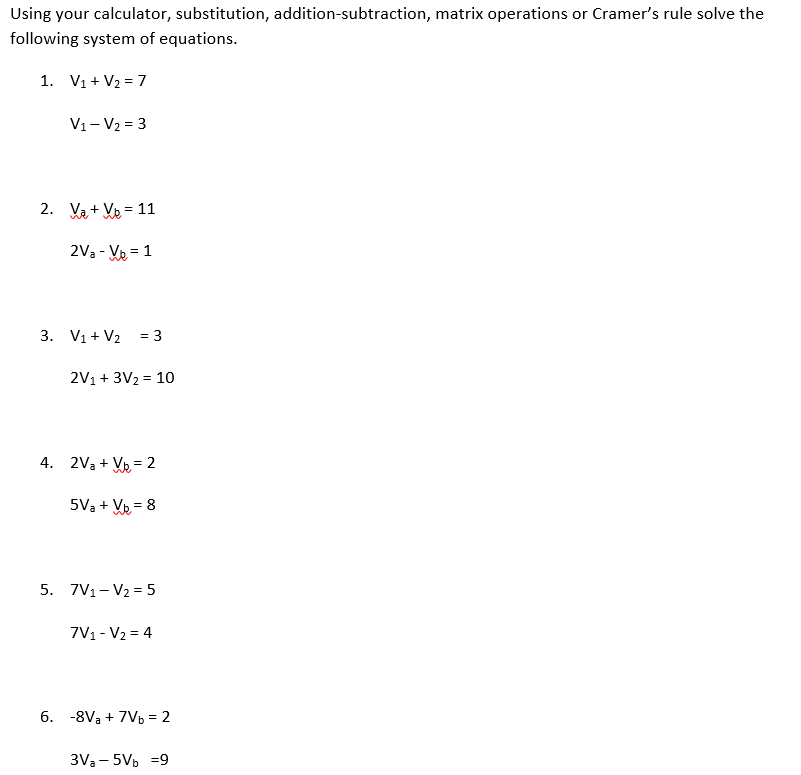
If it becomes difficult to solve for a variable in a system of equations, the multiplication/addition method or linear combination method may be a better method to use. Since x = -2 and y = 0, the two lines intersect at (-2, 0). To solve for "y," substitute for "x" into the equation "y = 3x + 10" as such. Subtract 18 from both sides, then divide both sides by 4 to get "x" alone. We have an equation with one variable, which will allow us to use basic algebra techniques to solve for "x," the remaining variable. We will do this by replacing the "y" with "3x+6." Now that we have an equation solved for "y," we can now substitute it within the first equation. Simply add "3x" to both sides of the equation. This will allow us to get the "y" variable alone without much effort. "Y" in the second equation has a coefficient of one. For instance, this system of equations has a variable that has a coefficient of one. This is because will be simple to get a variable alone and proceed with this method. The substitution method is best used when a coefficient on a variable is equal to one. Ideo: Problem of the Day: System of EquationsĬtivity: Multiplication/Addition (Elimination) Method Ideo: Solving Systems of Equations: The Multiplication/Addition Method We will leave the reader to verify that the solution is x = -2 and y = -3. In either case, we can now use the addition method to cancel a single letter from each system, in order to be left with a single variable and one equation. Or, we could multiply the top equation by 3 and the bottom equation by 2. To achieve these opposite coefficients we could multiply the top equation by 4 and the bottom equation by 6 as such. This set of equations requires multiplying both equations by values so that the coefficients on either the x-values or the y-values are opposite in value.

However, if the coefficients on the x-terms were opposite in value (like the problem from the addition method section above), we could add the system of equations to end up with a single equation with only one variable. Let us say we had to solve this system of equations.Īdding the two equations as they are right now will not cancel any variable, nor leave us with a single variable. View the following example to get a feel for this this strategy. The technique for preparing the equations is sometimes simple and other times more complicated. It is more probable that our equations will need to be manipulated so we may use the addition method. A solution to a system of equations must satisfy all the equations in the system.Most of the equations that we are presented with do not have coefficients that are opposite each other for a single variable like we saw for the example presented within the addition method above. Step 6: Check the solution in both equations. We substitute the value of the variable obtained in step 4 in any of the two equations and solve.

Step 5: Find the value of the other variable.
Substitution equation systems how to#
If you need to review, you can take a look at our article on how to solve linear equations with one variable. By doing this, we will get the value of one of the variables. By doing this, we will obtain an equation with only one unknown. Step 3: Substitute the expression obtained in step 2 in the other equation. We can choose any of the equations and solve for any of the variables.

Step 2: Solve an equation for one variable. This includes removing parentheses, combining like terms, and removing fractions. Step 1: Simplify both equations if possible. In detail, we can follow the following steps to solve systems of equations by substitution: Then, we substitute the obtained expression in the second equation, and we will obtain an equation with a single variable, which can be solved easily. The substitution method for solving systems of equations consists of solving one of the equations for one of the variables. Steps to solve systems of equations by substitution


 0 kommentar(er)
0 kommentar(er)
